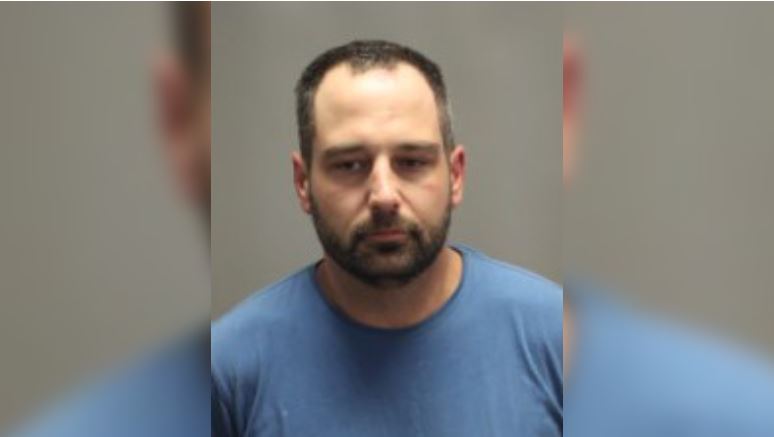Newsom wants to transform San Quentin State Prison. The council advising him can meet in secret

Posted Aug 31, 2023 04:01:18 PM.
SACRAMENTO, Calif. (AP) — California Gov. Gavin Newsom’s planned transformation of San Quentin State Prison into a rehabilitation facility after decades as the home for death row inmates is being shaped by a hand-picked advisory council that is allowed to meet in secret.
State lawmakers initially balked at Newsom’s $360 million plan to tear down an old furniture factory on the prison grounds and replace it with a building more reminiscent of a college campus, with a student union, classrooms and possibly a coffee shop. But they eventually greenlit the project during state budget negotiations, trading away transparency provisions and a formal oversight role for themselves in the process.
The Democratic governor wants to remake San Quentin, where the state performed executions, into a model for preparing people for life on the outside — a shift from the state’s decades-long focus on punishment.
And he wants it all complete by December 2025, just before he leaves office.
The 21-member advisory council Newsom selected began meeting in June to discuss the new facility’s design and programming. A requirement that it follow open meetings law was removed during budget negotiations, meaning the group’s discussions are behind closed doors.
After inquiries from The Associated Press, the governor’s office said it will release the advisory council’s report to the public before Newsom presents his next budget to lawmakers in January.
“Since the very beginning of this process, the administration has engaged a diverse set of stakeholders and committed to transparently making the Advisory Council’s recommendations public. Our partners in the Legislature — along with stakeholders including victims, incarcerated individuals and their families, (The Department of Corrections and Rehabilitation) staff, and program providers — are the linchpin to San Quentin’s success,” Izzy Gardon, deputy director of communications for Newsom, said in a statement.
The closed-door meetings are a concern for supporters and critics of prison reform. Republican lawmakers say the Legislature needs more of a say in the process, especially when the state faces a nearly $32 billion budget deficit. Criminal justice advocates say reforming San Quentin is a distraction from the real goal of closing more prisons.
“Spending hundreds of millions on new prison infrastructure is a step in the wrong direction,” said Brian Kaneda of CURB, a criminal justice reform coalition. “If there’s no public accessibility to the San Quentin advisory council meetings, that’s a really significant concern that I think people aren’t paying enough attention to.”
The advisory council includes criminal justice reform advocates, San Quentin top brass and Newsom political allies like Sacramento Mayor Darrell Steinberg. It has met at least five times since June, and it will give a preliminary report to the administration this September and a final report in December.
Newsom announced his plans in March for remaking and renaming the facility located about 18 miles (29 kilometers) north of San Francisco to the San Quentin Rehabilitation Center. He said California would offer its own take on the Scandinavian prison model where cells look more like dorm rooms and inmates have access to activities and educational programs.
Newsom in 2019 instituted a moratorium on executions, and the state has begun moving San Quentin’s remaining 700 death row inmates to other prisons. San Quentin is home to more than 3,600 inmates.
San Quentin already has some of the nation’s most innovative programs for inmates. In July, Newsom’s administration invited reporters to tour the prison, showcasing accredited college classes, a coding academy and the prison’s award-winning newsroom, among other programs. Many inmates said they’re excited for more programming spaces, but others remained skeptical.
Juan Haines, an inmate at San Quentin for nearly three decades, said the governor’s efforts would only work if both inmates and prison guards are buying into the vision, he told reporters during the July media tour.
Steinberg, one of the advisory council’s leaders, said the group is tackling how to retrain correctional officers and improve inmates’ experience, among other issues.
The Department of Corrections and Rehabilitation started soliciting contractors to design the new campus before lawmakers approved the budget, and a firm has been hired with plans to start construction next year. Lawmakers waived the historic preservation requirement and an environmental impact review to speed up the project.
The San Quentin campus would cost $360 million through a lease revenue bond. Lawmakers also agreed to another $20 million from the general fund for other smaller capital projects recommended by the council.
Democratic lawmakers, who hold a supermajority in California, said they’re supportive of Newsom’s project. Approving it helped them score a different political victory.
In exchange for approval, they added a provision to the budget giving them access to key data on the operational capacities of prisons across the state, which they say will help determine which to shut down. California has roughly 15,000 empty prison beds, a number that’s expected to grow.
Assemblymember Phil Ting, a San Francisco Democrat who chairs the Assembly Budget Committee, said lawmakers have been promised more details on San Quentin but their goal is “to have a much larger discussion regarding the overall system … not just on one prison.”
Republican Assemblymember Tom Lackey, who sits on the budget subcommittee on public safety, said Newsom did not seek lawmakers’ input.
“We’re the oversight, supposedly,” Lackey said. “So how can you oversee something that has such minimal amount of communication?”
Thanh Tran, who was imprisoned at San Quentin from 2018 to 2022, said the whole process was a “black hole” for the public. Tran, who now works for the Ella Baker Center for Human Rights, said grassroots efforts to engage with lawmakers and the administration were ignored.
“The governor has made his choice,” Tran said. “He has given this unfettered power to this advisory council that is allowed to meet in secret, and we are boxed out.”
Newsom told reporters in August that there would be “formal” and “informal” engagement about the San Quentin project with the Legislature throughout the process, but the state needs to act with urgency.
“I don’t have many summers left, I want to get it going,” he said. “People are counting on us. They’re waiting for us.”
Lawmakers from both parties initially scoffed at the high price tag and rejected Newsom’s plan. The Legislature’s nonpartisan advisors said it lacked details and called the 2025 deadline “unnecessary” and “problematic.”
The budget lawmakers passed contained provisions that would have allowed them to appoint at least two members to the advisory council, required the council to hold public meetings and mandated the administration provide them updates. Yet, days later, they gave Newsom the whole $380 million package — with all of the accountability provisions they wanted cut out.
Ting defended the deal, saying the state won’t authorize the lease revenue bond for the project without “very, very detailed plans.”
Trân Nguyễn, The Associated Press








